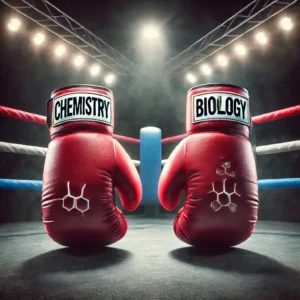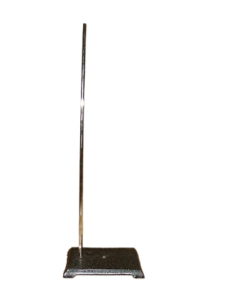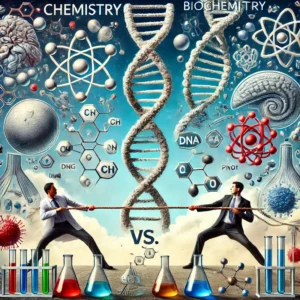The Bunsen burner is the most common and most convenient heating source in most chemistry laboratories. It was invented by Professor Robert Bunsen in 1855. It consists of three main parts:
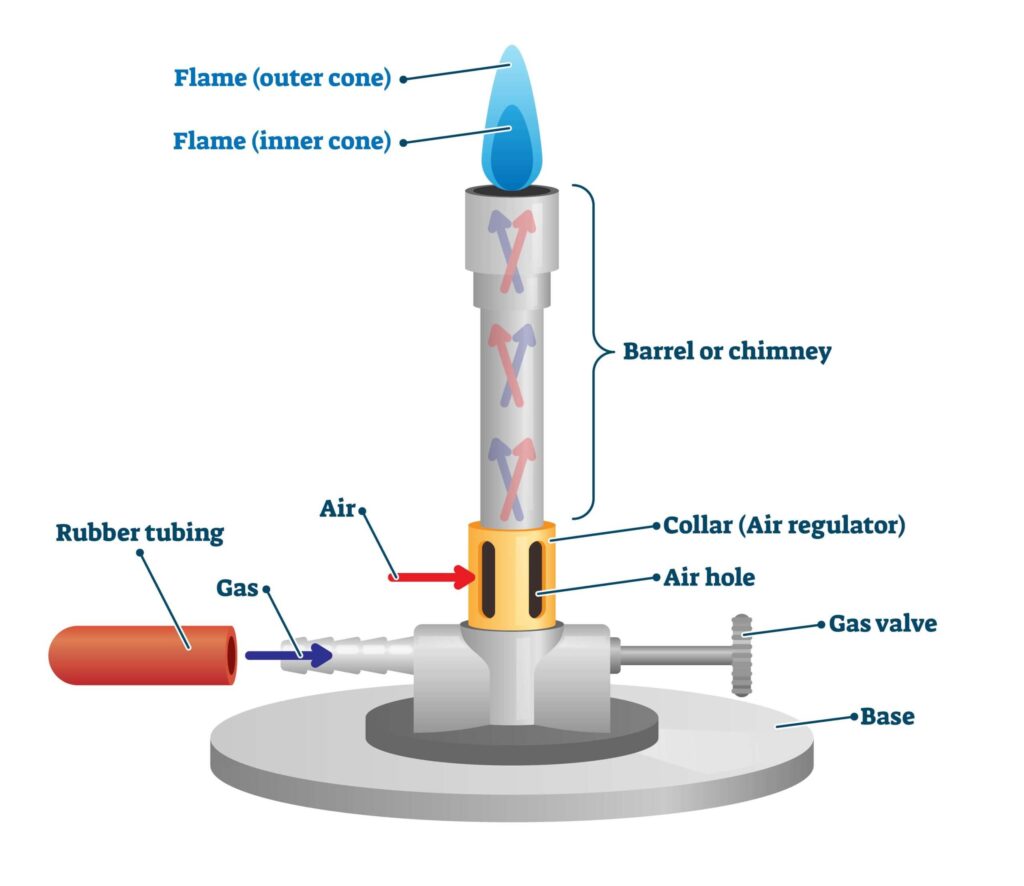
- Chimney: A hollower metallic cylinder with an air hole near its lower end.
- Collar: The metal ring which may have an air hole whose diameter is the same as that of the hole in the chimney. The diameter of the collar is usually slightly bigger than that of the chimney so that the chimney can just fit into it.
- The Base: It is made of thick and heavy metallic material into which a small hollow meal with a jet is fitted.
How a Bunsen burner Works
The Bunsen burner is normally connected to an external source of laboratory gas (usually methane) by rubber tubing. The jet allows the laboratory gas into the chimney. The collar is used to regulate the amount of air that enters the chimney. The air hole allows air to enter and mix with laboratory gas. This mixture of gases (laboratory gas and air), when ignited burns at the top of the chimney to produce a flame.
Types of Flames in Bunsen burner
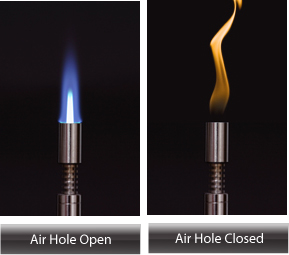
When ignited, the Bunsen burner produces two main types of flames depending on the amount of air allowed into the chimney (or the extent to which the air hole is opened).
When the air hole is completely closed, the flame produced is large, yellow, wavy, quiet, and gives out a lot of light. Because it gives out more light, it is usually described as a luminous flame.
When the air hole is fully open, the flame produced is blue in color, noisy, and gives out very little light. For this reason, it is usually described as a non-luminous flame.
Luminous vs. Non-Luminous Flame
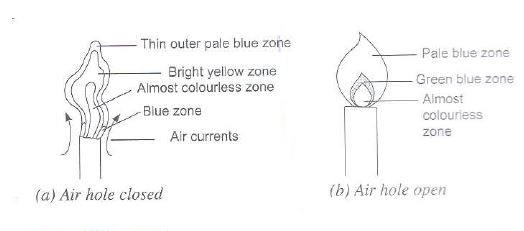
Luminous Flame
As aforementioned, a luminous flame is produced when the air hole is completely closed. This means that no air enters the chimney. Because of insufficient air entering the chimney, there is incomplete combustion (burning) of the laboratory gas. Consequently, the gas burns producing tiny solid carbon particles instead of carbon dioxide. The white-hot carbon particles glow brightly and they are responsible for the yellow color of this type of flame and the emission of a lot of light.
The bottom of the glass apparatus paced in a luminous flame usually gets coated with a back deposit of soot. It is these unburnt carbon particles that cause the soot.
If you observe closely, luminous flames are not entirely yellow; there are colorless and blue parts. Let’s focus on these areas, or zones, to try to understand what happens or why they occur.
- The Blue Zone: Occurs at the bottom of the flame. Here, air near the flame rises rapidly and mixes with the burning gas. This makes the burning almost complete hence the blue color.
- Almost colorless inner zone: Occurs below the yellow zone. It is mainly composed of unburnt gases.
- Thin outer pale blue zone: This is usually faintly visible. Here, the laboratory gas mixes with plenty of air from the outside and burns completely into carbon dioxide and water.
Non-Luminous Flame
A non-luminous flame is produced when the air hole is completely open. Under these conditions, a lot of air enters into the chimney, resulting in complete combustion hence the blue color of the flame. A non-luminous flame gives out only little light because it is composed of fewer hot carbon particles.
Glass apparatus placed in non-luminous flames remains clean.
Like the luminous flame, a non-luminous flame isn’t entirely blue; there is a middle greenish-blue zone and an inner colorless zone. Let’s also try to understand what happens in these zones:
- Middle Greenish-Blue Zone: Contains partially burned gases due to an insufficient supply of air.
- Inner Colorless Zone: Occurs at the bottom of the flame and mainly consists of an unburnt gas-air mixture.
Summary
For a quick comparison of the two main types of Bunsen burner flames, here is a quick summary of their main differences:
| LUMINOUS FLAME | NON-LUMINOUS FLAME |
| Produced when the air hole is closed | Produced when the air hole is completely open |
| Bright yellow in color | Blue in color |
| Give out a lot of light | Gives out little light |
| Large, wavy, and unsteady | Small, steady, and roaring |
| Produces soot | Doesn’t produce soot |
| Burns quietly | Burns noisily |
| Moderately hot (reaching up to 300oC) | Very hot (reaching up to 7000c) |
| Not suitable for heating purposes because it produces less heat | Preferred for heating in the lab because it produces a lot of heat |

